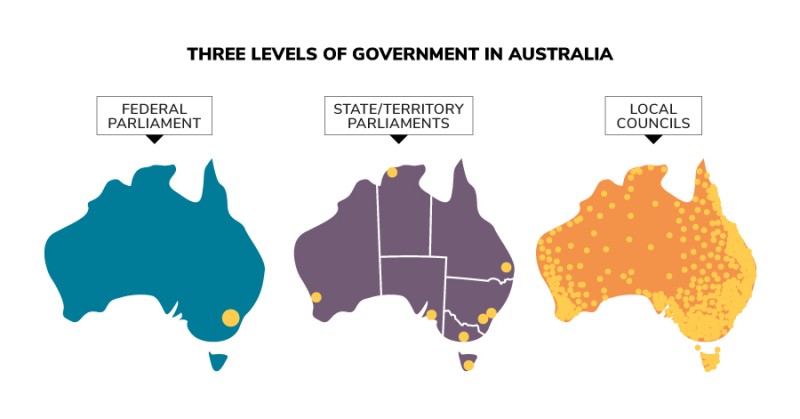What are the three levels of government, and do they share any responsibilities?
The three levels of government are an important feature of Australia’s system of government, so thank you for the opportunity to explain it. The three levels are:
- federal – Australian – Parliament, in Canberra
- state and territory parliaments or legislative assemblies, in each state and territory capital city
- local councils – also called shires or municipalities – across Australia
Section 51 of the Australian Constitution lists the areas which the Australian Parliament can make laws about. The Australian Parliament makes laws about issues that affect all Australians like foreign affairs, defence, and social security benefits like pensions and maternity allowances.
Areas not listed in the Constitution are the responsibility of each state or territory government. These state or territory areas include hospitals, police, and public transport.
Local councils are not mentioned in the Constitution, but the states have the power to make laws to create local councils. In general, these laws cover how councils are elected and their power to make and enforce local laws, known as by-laws. In this way, we have a third level of government in Australia. The ACT is unique and combines the territory and local government into one.
State/territory and federal parliaments share responsibility for some matters. A good example is education. State/territory governments hire teachers and run schools, but the Australian Government prepares the national curriculum taught in schools. If a state/territory law and a federal law conflict, section 109 of the Australian Constitution says the federal law must be followed. The Australian Parliament can overturn a territory law at any time.
Three levels of government in Australia

Parliamentary Education Office (peo.gov.au)
Description
The three levels of government – the law-making bodies in Australia. The Federal Parliament is located in Canberra, the nation's capital. State/territory parliaments are located in the capital cities of each of the 6 states and 2 territories. Local councils are located around Australia in each local council division.
This work is licensed under a Creative Commons Attribution-NonCommercial-NoDerivs 3.0 Unported License.
You are free to share – to copy, distribute and transmit the work.
Attribution – you must attribute the work in the manner specified by the author or licensor (but not in any way that suggests that they endorse you or your use of the work).
Non-commercial – you may not use this work for commercial purposes.
No derivative works – you may not alter, transform, or build upon this work.
Waiver – any of the above conditions can be waived if you get permission from the copyright holder.
